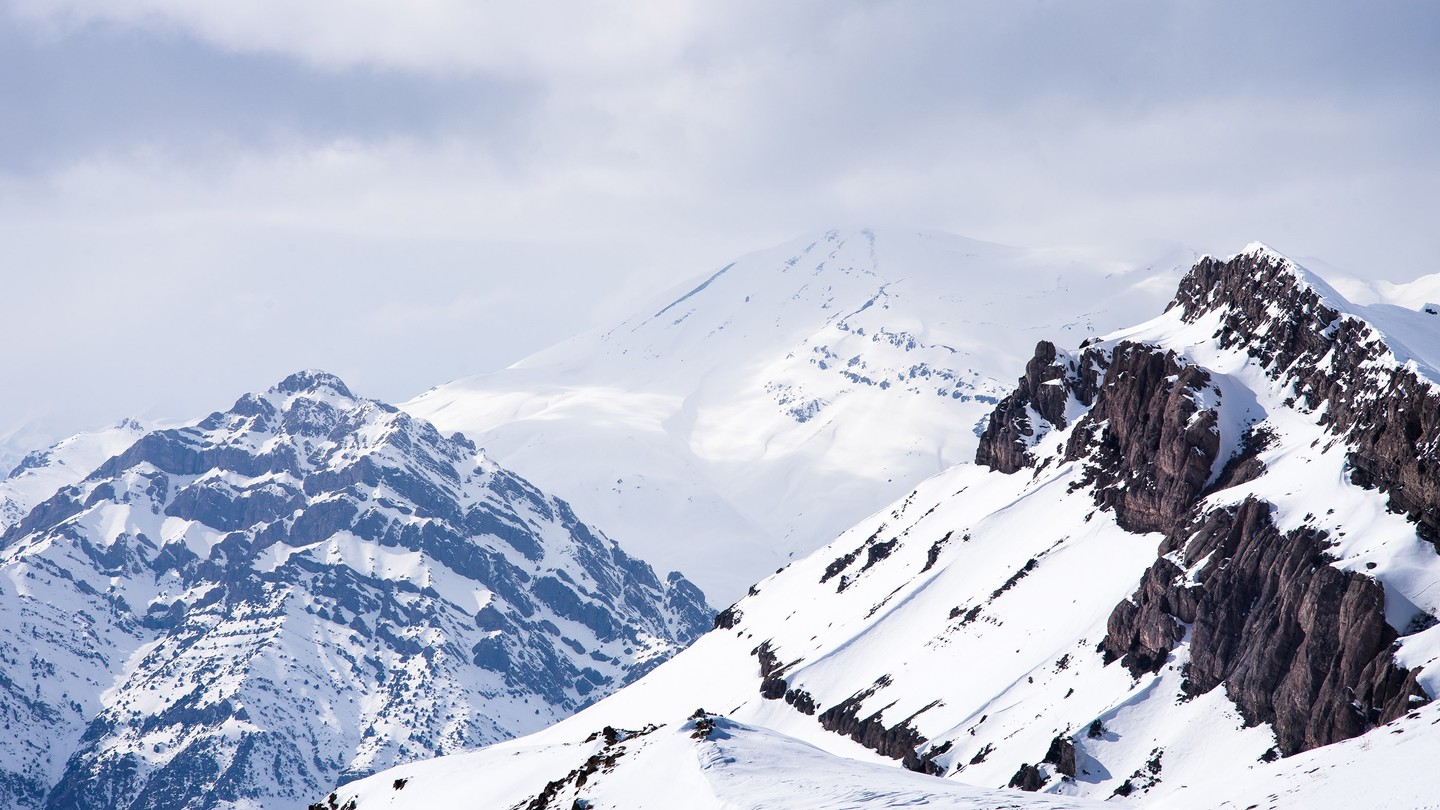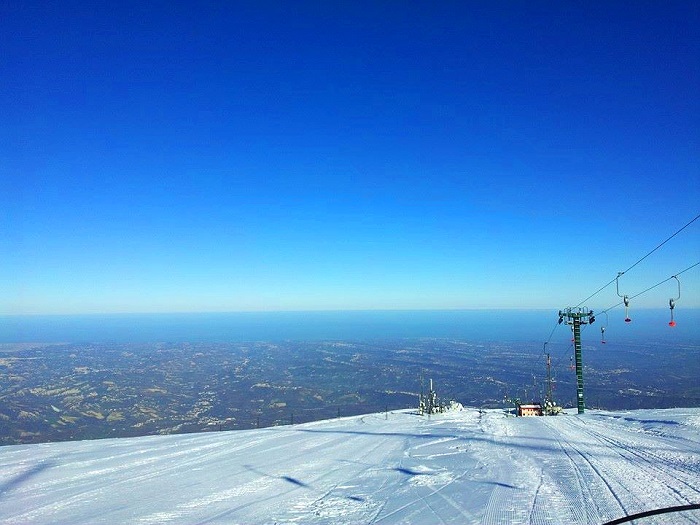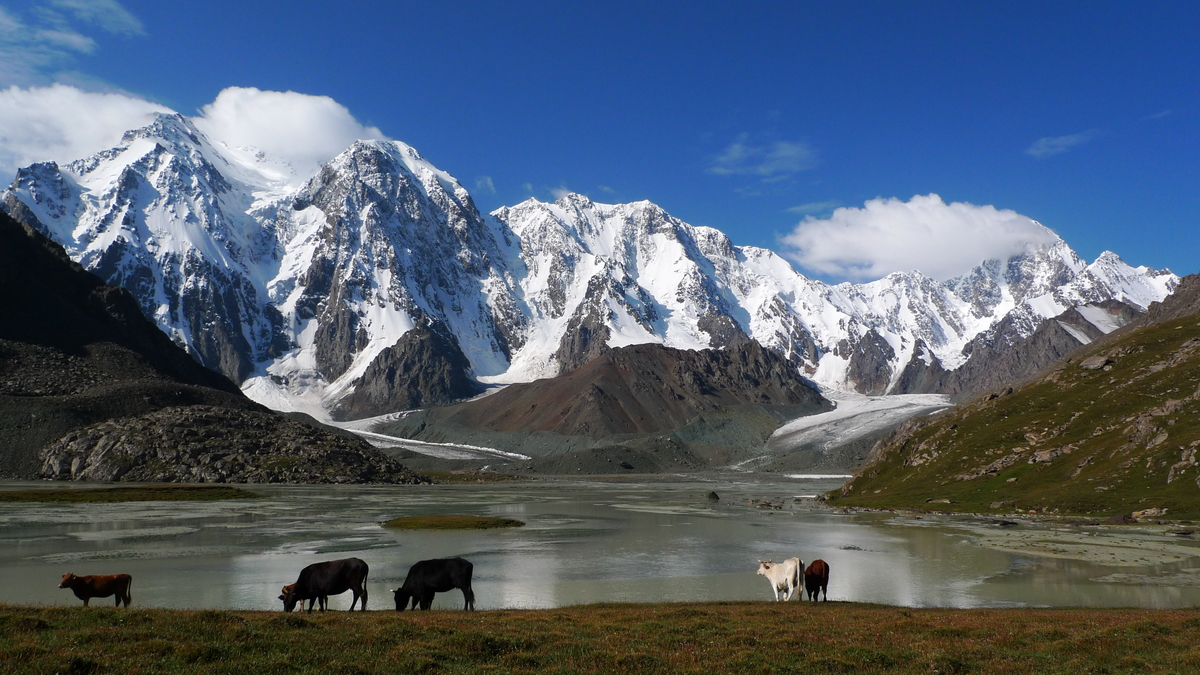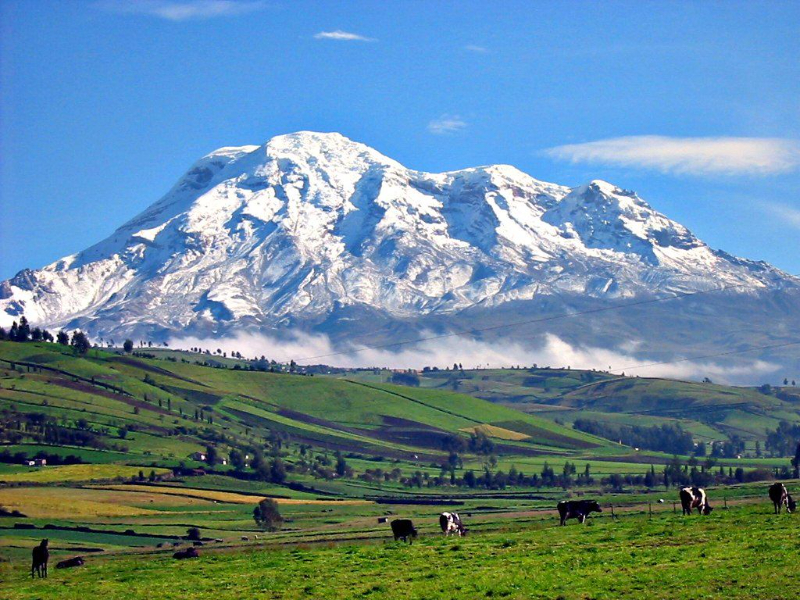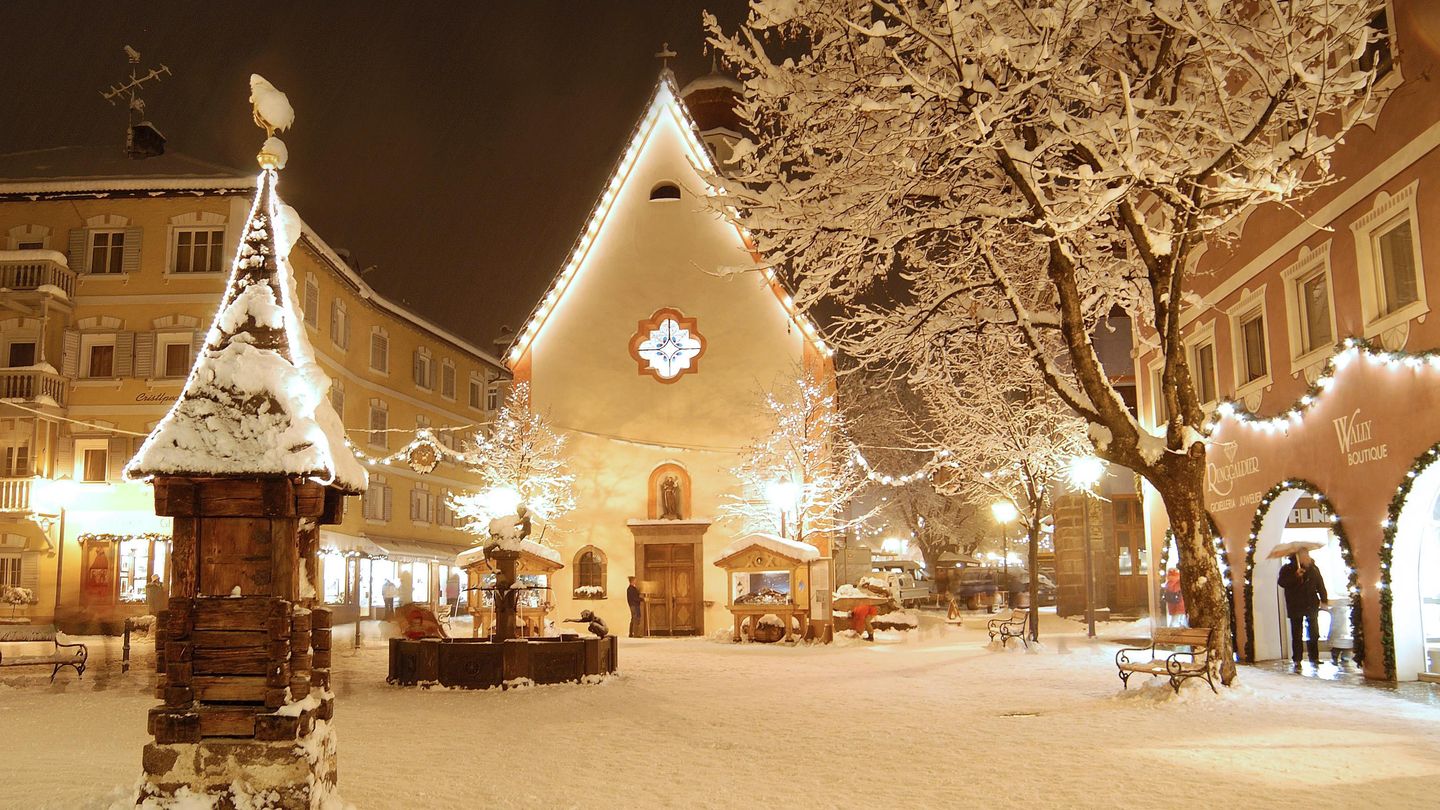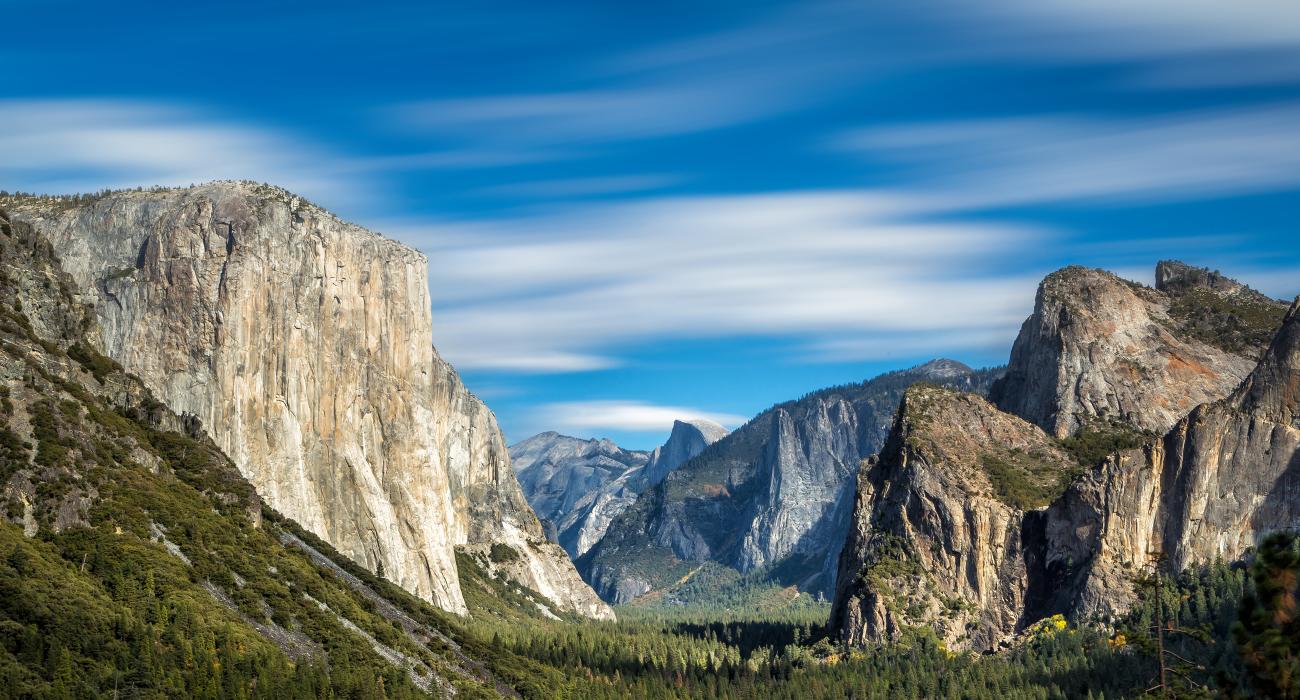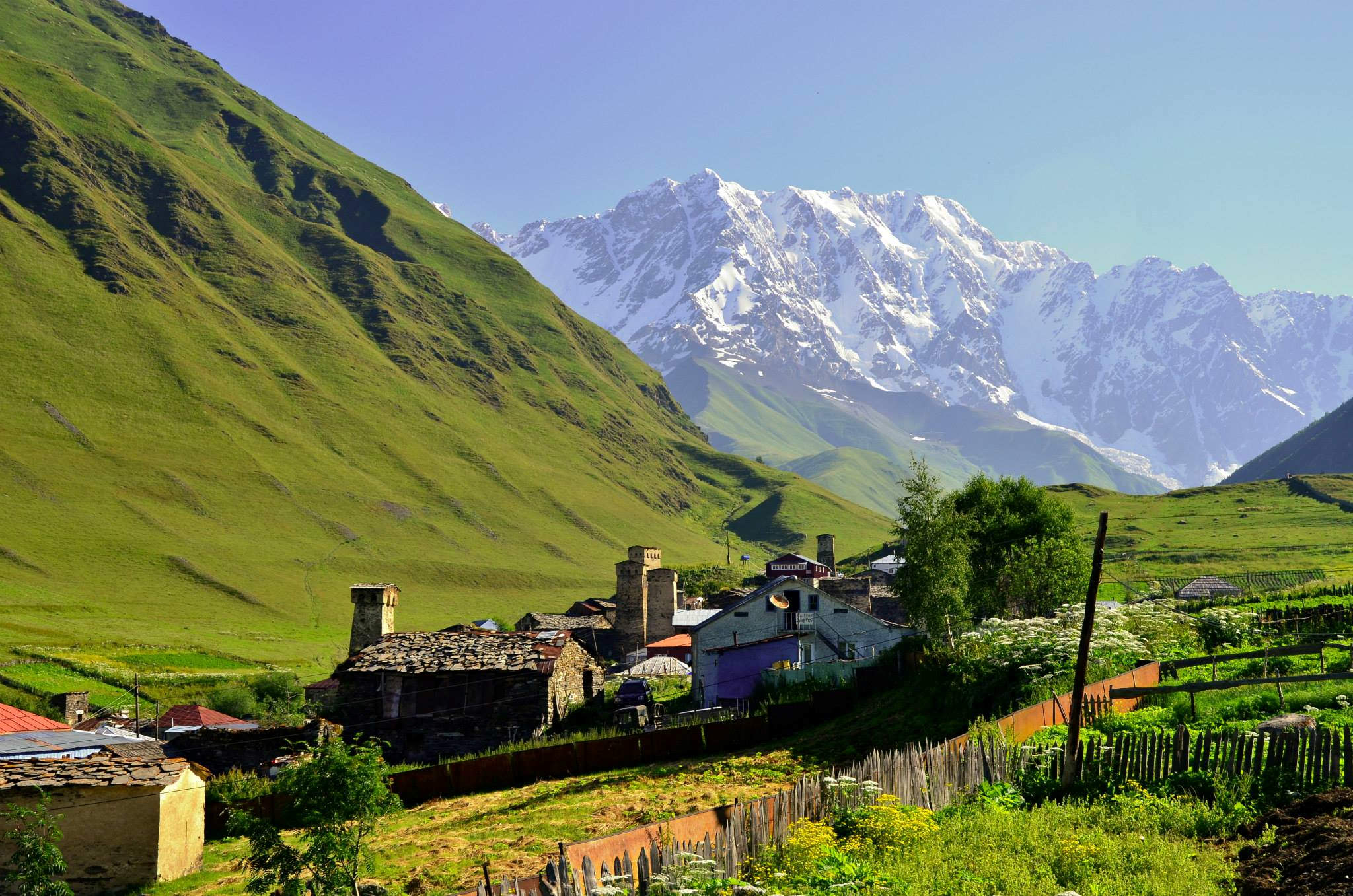On a clear day you can see the mountains rising just north of Tehran, a great wall of them towering 8000 feet above the city under its pall of smog (see images). The Alborz (or Elburz, signifying High Guard in Old Persian), together with their extensions, stretch in a long arc across the top of Iran, from the border with Azerbaijan almost to the outliers of the Hindu Kush. Both culturally and geographically, the Alborz mountains separate two worlds. To the south lies the parched plateau, with a great desert at its heart. Thanks to the perennial streams that originate in the hills, cities have flourished for centuries at the foot of the Alborz: Rayy, Nishapur, Qazvin, not to mention Tehran. North of the mountains is the Caspian littoral, moist and lush, a land of rice paddies, tea plantations and orange groves. To the east the climate quickly grows drier; here is the edge of Central Asia, still the home of nomadic Turkoman tribes. In the mountains all these elements mingle — moist and dry, settled and nomadic, Iran and Turan.
